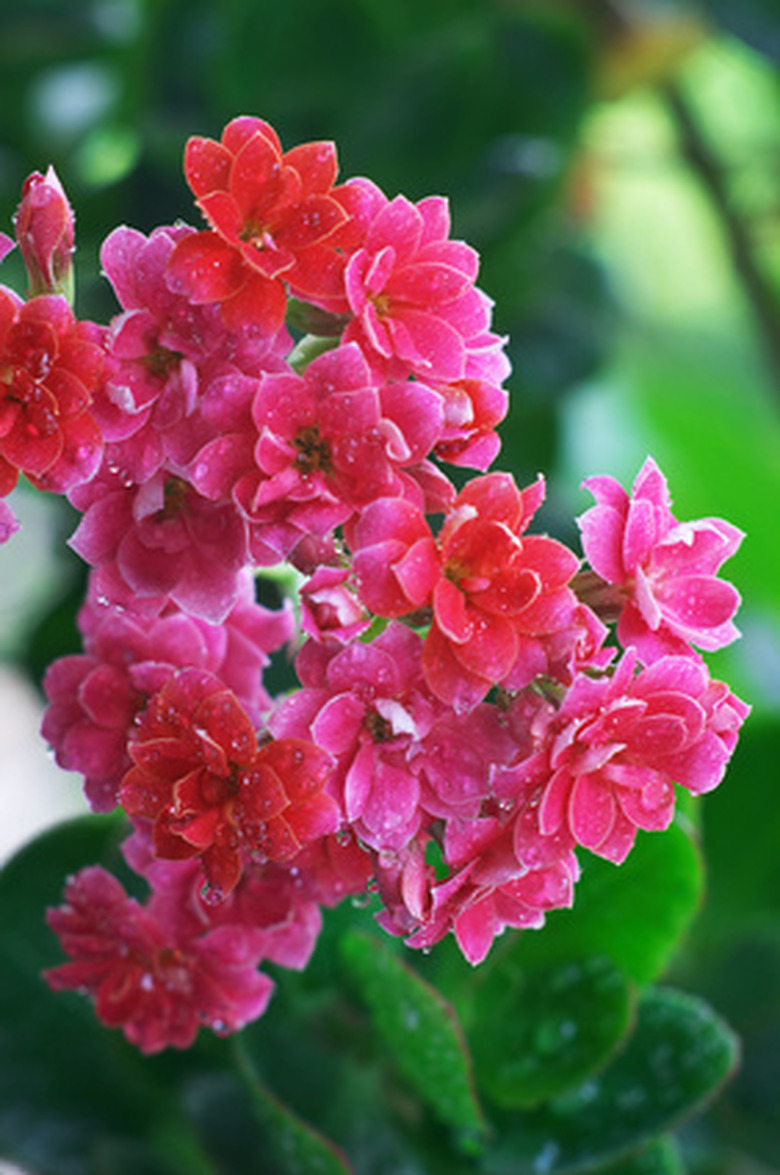How To Care For A Pink Kalanchoe
Things Needed
- Container
- Peat
- Perlite
- Water
- Liquid fertilizer
- Pruning shears
Several cultivars of pink kalanchoe such as carnea, bingo and sensation range in colors from light pink to vibrant, dark pink. Belonging in the family Crassulaceae, kalanchoe is a perennial, evergreen succulent native to Africa, Madagascar and portions of Asia. Depending on the particular cultivar, plants bloom in a vast range of colors including white, red, pink, yellow, orange and purple. Kalanchoe is a hardy, relatively maintenance-free plant, provided gardeners meet its growth requirements. Its bright sprays of flowers attract butterflies and hummingbirds, making it a welcome addition to butterfly gardens.
Step 1
Plant kalanchoe outdoors in the ground in USDA planting zones 9 and 10, as kalanchoe is cold sensitive and only tolerates temperatures down to 50 degrees F. Gardeners in cooler regions should grow kalanchoe inside of containers.
Step 2
Select a container two times larger than the kalanchoe's root ball that drains. Fill the container with a well draining, rich potting medium containing one-half peat and one-half perlite, as it will not tolerate soggy soils.
- Several cultivars of pink kalanchoe such as carnea, bingo and sensation range in colors from light pink to vibrant, dark pink.
- Kalanchoe is a hardy, relatively maintenance-free plant, provided gardeners meet its growth requirements.
Step 3
Grow kalanchoe outdoors in soil amended with peat that drains well. Kalanchoe will die of root rot if planted in saturated soils.
Step 4
Grow kalanchoe plants in areas receiving full sun to partial sun for best blooms and growth. Plants will become leggy if grown in complete shade and will not bloom. Situate plants grown in containers in a sunny window or an area receiving high light.
Step 5
Water the kalanchoe plants growing in the ground approximately once per week, depending on local weather. Water container-grown plants when the soil begins to feel dry. Kalanchoe is relatively drought tolerant but will benefit by occasional watering.
- Grow kalanchoe outdoors in soil amended with peat that drains well.
- Grow kalanchoe plants in areas receiving full sun to partial sun for best blooms and growth.
Step 6
Fertilize plants after they have bloomed with a half-strength, 20-20-20 liquid fertilizer once per month. Stop fertilizing when plants begin to bloom.
Step 7
Groom kalanchoe plants by removing any dead leaves or spent flowers. Kalanchoe does not require pruning.
Step 8
Force container-grown plants to bloom by placing the plant in a shady window for approximately one month. Return the plant to a sunny location and the plant should bloom.
Tip
Insects are rarely a problem on kalanchoe plants. If they become a problem, use an insecticide designed for use on kalanchoe. Kalanchoe is suitable for use in rock gardens or xeriscape landscaping. Start a new plant by using a cutting from the mother plant. Cut off approximately a 4- to 6-inch section of plant and allow it to heal over for several days before planting it into soil.
